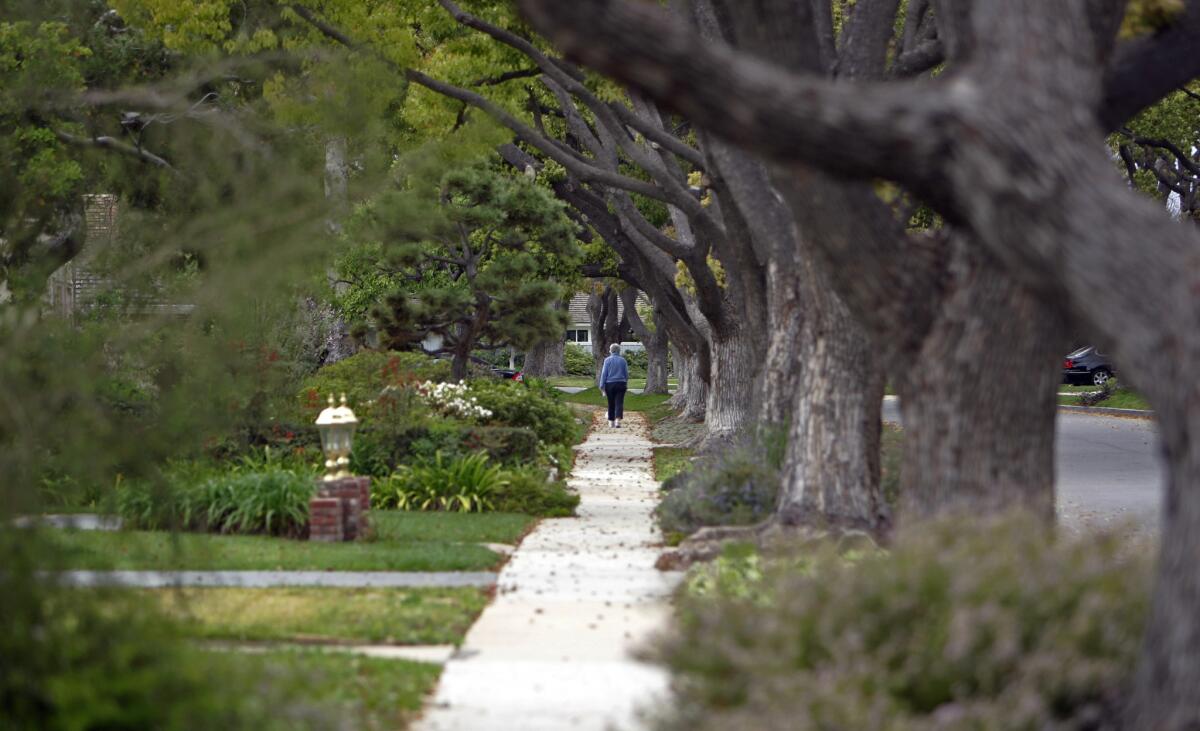10 more trees on your street could make you feel 7 years younger

Mature trees line the street in Park Estates in Long Beach.
- Share via
Leafy, tree-lined streets aren’t just good for property values; they may also be good for your health, according to a new report.
After analyzing two sets of data from the city of Toronto, researchers report that adding just 10 trees to a single city block could improve how healthy a person feels as much as if they made an additional $10,000 a year or if they were seven years younger.
The study in the journal Scientific Reports also found that residents of neighborhoods with higher tree density are less likely to have cardio-metabolic conditions like hypertension, obesity and diabetes.
And it’s not just that the well-to-do who live on tree-lined streets can afford a healthier lifestyle. The researchers controlled for demographic and socioeconomic factors and found that living near trees still had an effect on one’s perception of health and overall health.
“These effects are independent of how much money people make,” said Marc Berman, director of the Environmental Neuroscience Laboratory at the University of Chicago, and the senior author of the paper. “Wealthy neighborhoods and poor neighborhoods with trees seem to have better health.”
The tree data in the study came from the Toronto city government, which has cataloged every single tree on public land, including the species of the tree and its size. The researchers also looked at satellite data with a half-meter resolution to see how much of the tree canopy in any given neighborhood came from backyard trees.
The health and socioeconomic data came from the Ontario Health Study and included more than 30,000 residents in Toronto.
Toronto was of particular interest to the research team because it is in Canada -- a country with universal healthcare. Therefore, whether a person has money should not affect his or her ability to get medical attention.
They note that in a country that does not have universal healthcare, having an extra $10,000 a year might have more of an effect on a person’s health than living near trees.
Although the study found a strong correlation between living on a tree-lined street and health, the researchers still don’t know why.
“Trees remove pollutants from the air, so it could be the cleaner air, or it could be that adding more trees on the street encourages people to go outside and exercise more,” Berman said. “Or it could be that the environment is more beautiful, and that contributes to health.”
It is also possible that healthier people choose to live in neighborhoods with more trees.
“Our data is correlational, so we can’t say trees are causing better health; we can only say they are associated with better health,” he said.
Berman and his team have calcluated that it takes $500 to $3,000 to add 10 new trees to a single city block, which city planners might see as a pretty good investment.
“Greening the face of a city has real economic benefits,” he said. “We already know it’s good for air quality, property values, controlling water, and now we are showing it’s good for health too.”
Science rules! Follow me @DeborahNetburn and “like” Los Angeles Times Science & Health on Facebook.






